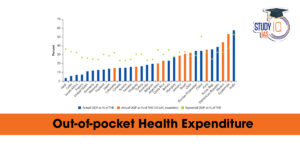Table of Contents
Political Upheavals in Different Countries (2024)
- South Asia
- Bangladesh: Sheikh Hasina returned to power in January but was ousted by student protests in August, forcing her to flee the country.
- Sri Lanka: September elections replaced traditional parties, bringing the National People’s Power to power.
- East Asia
- South Korea: The ruling People Power Party was defeated by the Democratic Party in April.
- The year ended with an emergency imposed by the president and calls for his impeachment.
- Japan: The Liberal Democratic Party (LDP) suffered major losses in October, failing to secure a parliamentary majority even with its coalition partner Komeito.
- An unstable coalition is now led by Prime Minister Shigeru Ishiba.
- South Korea: The ruling People Power Party was defeated by the Democratic Party in April.
- Africa
- South Africa: May elections ended the African National Congress (ANC)’s dominance, forcing it into a coalition for the first time.
- Europe
- France and Germany: Right-wing parties rose dramatically in national and European Parliament elections in June.
- French President Emmanuel Macron called snap elections to stem the right-wing tide, causing political instability.
- United Kingdom: The Conservative Party suffered a historic defeat in July, bringing the Labour Party back to power after 14 years.
- France and Germany: Right-wing parties rose dramatically in national and European Parliament elections in June.
- United States: Donald Trump returned to power with a massive popular mandate, defeating Kamala Harris and securing a Republican majority in Congress.
Economic Context of India
- GDP Growth: India registered a GDP growth rate of above 7% in recent years, bouncing back strongly after the COVID-19 pandemic.
- The World Bank revised India’s GDP growth forecast for FY 2025 to 7%, up from an earlier projection of 6.6%.
- Global Comparison: India is set to remain the fastest-growing major economy, outpacing China, which reported a 4.7% growth rate.
- Debt and Deficit: Debt-to-GDP ratio reduced from 9% to 82%.
- The current account deficit is expected to remain low, between 1% and 1.5% of GDP, for the next couple of years.
Challenges
- Persistent issues include unemployment, stagnant exports, and low private and corporate investment levels.
- Inflation remains a concern, affecting consumption and demand.
- Public investment is robust, contributing significantly to GDP growth.
- However, private sector participation remains underwhelming, requiring immediate remedial action.
- Political stability and social harmony are deemed essential for achieving economic objectives.
- Historical examples from countries like China and Singapore illustrate that consistent growth is linked to stable governance.
- In contrast, India has struggled to maintain high growth rates since independence.
Future Outlook
- Growth Trajectory: With consistent growth and reforms, India is expected to sustain its position as a global economic bright spot.
- Employment and Skill Development: Tackling unemployment through labour-intensive industries and expanded skill programs to equip the workforce for a digital future.
- Private Sector Revival: Policy incentives to encourage private sector and corporate investments.
- Tax reforms and simplified regulations to boost industrial expansion.
- Global Positioning: Stronger Free Trade Agreements (FTAs) and strategic economic diplomacy to diversify export markets and reduce dependency on traditional partners.
- Social and Political Stability: Maintaining social harmony and avoiding disruptions to economic activities are considered essential to achieving sustained growth.
Key Drivers for Growth
- Public Infrastructure Investments: Continued focus on roads, railways, energy, and rural development.
- Export Diversification: Strengthening global trade ties to support manufacturing and export growth.
- Startup Ecosystem: Leveraging innovation through programs like Startup India and focus on emerging sectors (AI, fintech, and renewable energy).


 Out-of-Pocket Health Expenditure, Reason...
Out-of-Pocket Health Expenditure, Reason...
 Treasury Bills (T-bills): RBI Cuts Holdi...
Treasury Bills (T-bills): RBI Cuts Holdi...
 Fisheries Sector in India, Current Statu...
Fisheries Sector in India, Current Statu...

























